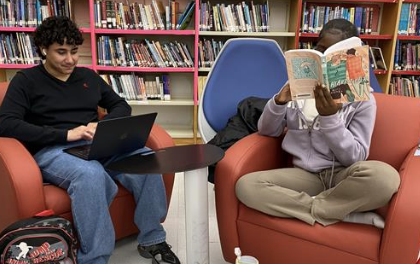- Martin Luther King Jr. Academy
- Speech/Language & Articulation Activities
Jamieson, Francis
Page Navigation
- Home
- Assignments
- Calendar
- Class Expectations
- Books
- Discussion
- Podcasts
- Photos
- New York State Next Generation Learning Standards
- Schedule
- Resources to Help Children Understand Tolerance
- Portfolio Activities from ClassDojo - ELA & Writing
- Additional Science Activities (Optional)
- Reading, Math, Science, Social-Emotional Learning Activities
- Speech/Language & Articulation Activities
- Interactive Podcasts & YouTube (Bilingual)
- Reading Resources
- Interactive Educational Internet Resources
- Library Books - Read 1 book a day!
-
https://www.yonkerspublicschools.org/o/yps/page/library-services

The teacher considers students’ personal and family experiences when planning instruction. Students offer their personal perspective as it relates to the content. The teacher incorporates those perspectives in the planning process.
WHAT IS SPEECH AND LANGUAGE?
OFFICE OF STUDENT SUPPORT SERVICES
The Office of Student Support Services provides wellness, academic, behavioral, and social-emotional support services, as well as assessment and related services to students with identified needs. https://www.yonkerspublicschools.org/page/office-of-student-support-services
"Speech and language are often mistaken to be synonymous. Speech is the articulation and production of speech sounds within the mouth, whereas language encompasses comprehension, processing and production of communication. Expressive language refers to the ability to communicate and convey meaning to others. Typically, this output is speech, but may be in the form of signs, gestures and written language. Receptive language refers to the ability to understand the communication of others, and encompasses auditory and visual skills. Apart from expressive and receptive language, other pertinent components of language development are necessary for children to develop effective communication. These include joint attention, play and social-pragmatic language (which refers to the way in which language is comprehended and applied in a social context)."
https://pmc.ncbi.nlm.nih.gov/articles/PMC10775292/
About Special Education
https://www.yonkerspublicschools.org/page/special-education
American Speech-Language-Hearing Association
SpeechLanguageFeeding.com by Isa Marrs
https://www.speechlanguagefeeding.com/autism-affects-speech-language-eating/
https://clever.com/oauth/authorize?
Pick a story and have your child practice identifying main ideas and practicing new vocabulary words. One More Story - An online library of the best classic and contemporary picture books narrated and set to music.
Language Activities: This resource targets vocabulary, sequencing, categories and “WH” questions. https://www.quia.com/pages/havefun.html
Articulation Activities: This resource includes games such as hangman and picture match-up by sound. https://www.quia.com/pages/havemorefun.html
The following link contains several literacy and language links. https://www.speechbuddy.com/blog/games-and-activities/6-free-online-speech-therapy-resources/
https://www.starfall.com/h/index-kindergarten.php– Works on letter sounds and vocabulary (K and 1st grade students)
https://www.readworks.org/ – Reading comprehension passages and text-based questions based on grade level and skills targeted
https://www.hearbuilder.com/ (30 day free trial available) Auditory memory (students love the Auditory memory), sequencing, phonological awareness and following directions.
1.2. A Uses strategies to support learning and language acquisition
I am highly effective at supporting my students’ language acquisition, which is their primary challenge, both expressive, receptive and pragmatic usage. My favorite expression in class is “use your words”; they have grown tremendously in using their words since the beginning of the school year. This expressive use of language includes manners, saying words and phrases such as “please”, “thank you” and “may I ?”, which contribute to a respectful, safe environment in the classroom. I always physically go to their level, on my knees, which communicates to them my willingness to be fully present for them in their experience and to listen wholeheartedly.
Since research indicates that learning can not be robust when students are too stressed and their nervous systems too challenged (Doidge), I make a point of having the classroom be as stress-free as possible for my children.
I have done a fair number of routine assignments this year to allow the children to create successes that they can observe and experience for themselves and advance in their own learning. This enhances the foundation for their self-esteem as they can experience some sense of mastery. The routine is complemented through leveled and guided reading in the HMH Into Reading Program, Uniteforlitercy, Scholastic Books, Onemorestory, Brainpopjr, Mysteryscience, and a number of other programs. I listen to the students’ excitement about units and subjects and search for materials related to their interests. Instruction decisions are based on literacy units and responsive to the needs of each student. For example, when the class was exploring animal habitats, the interests of several students peaked. Certain students were interested in sharks and dinosaurs, which were additionally supported through Wild Kratts on the computer. These students interacted with the subject material and had conversations regarding what they were discovering.







